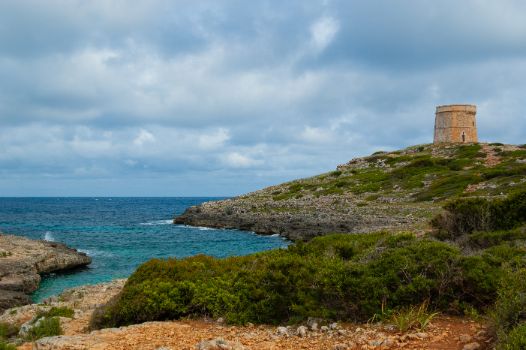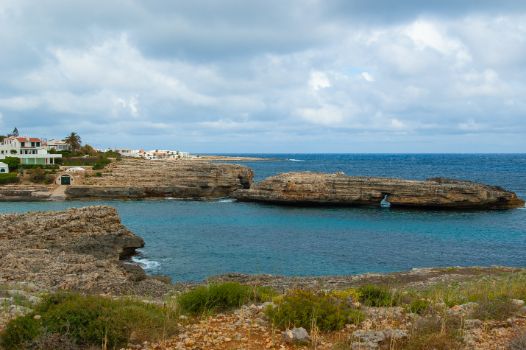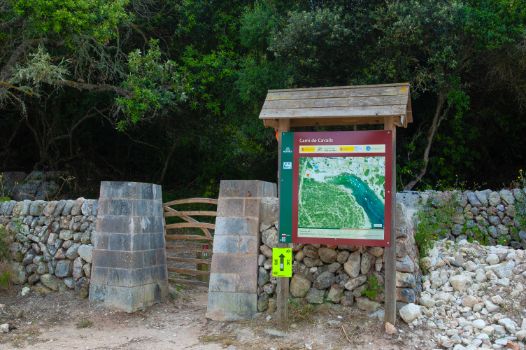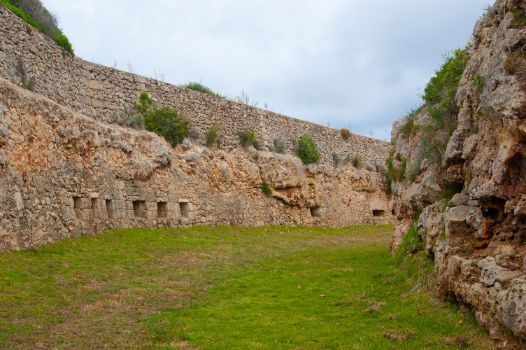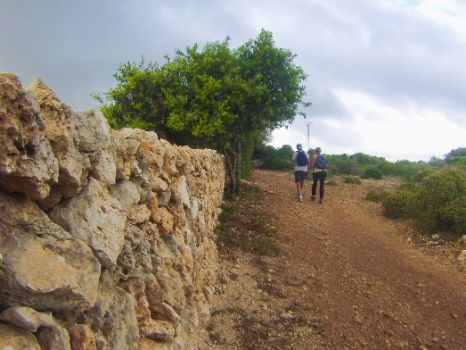
Net of Natural
Trails

Stage 19: Punta Prima - Cala Sant Esteve
Description
Forts and towers to repel pirate attacks
There are only two stages left in this great adventure! The 19th stage starts Punta Prima and stretches a little over 7 kilometres before ending in Sant Esteve Cove. The Alcaufar Cove and the beauty of the town of Alcaufar are especially noteworthy. Also outstanding are the old military constructions of a defensive nature that are located in this area, such as the Alcaufar Tower and Fort Marlborough. The spectacular beaches and coves of Punta Prima and Sant Esteve, at the beginning and the end of the cove, are also a must.

The penultimate stage of the Camí de Cavalls Nature Trail begins at the eastern end of Punta Prima, next to what is undoubtedly one of the most characteristic elements of this trail: a typical Menorcan gate, located, of course, next to a Nature Trails information board.
The Far de L'Illa de l'Aire is a constant reference point to admire the azure strait of water that separates the lighthouse from the Menorca mainland and, at the same time, a great point to watch the many bird species that live in L'Illa de l'Aire.
You will go on with the coast on your right and bushy area, with a diverse vegetation, on the left. When you reach the south-eastern tip of the island, you pass by the Alcaufar Tower, a defensive tower built in 1787 and restored in 1994. This infrastructure has three floors, as does the nearby Torre de So Ganxo, also in the defensive Martello Tower style. Originally the tower was accessed from the central floor by a retractable staircase, but nowadays it is accessed from the ground floor to facilitate access.

The itinerary continues in a northerly direction with the clear intention of visiting the town of Alcaufar, but not before enjoying its spectacular cove, which can be reached after leaving a typical Menorcan gate properly closed. Words fail to describe this place, with the houses and a small pier on one side and the mountains covered in Mediterranean vegetation on the other, culminating in a central beach of fine sand which is a stunning spot to go for a swim.
It is time to move away from the coast and, walking uphill, you reach a shared stretch of just under 500 metres, which continues to gain height. Shortly after, cross the Me-8 road and a few metres ahead also the road that leads to S'Algar, taking extreme precautions in both cases. The route continues along the Camí de Rafalet through an urban area that gradually dissolves into a Mediterranean scrubland with many of the species typical of this landscape.
After overcoming several Menorca gates, the trail goes on guarded by dry masonry walls used throughout the island to separate agricultural and livestock farms, known as tanques. This has the unfortunate consequence of blocking the view, but, in exchange, you can enjoy in detail the different species of Mediterranean scrub that can be seen along this stretch.
Finally, we have to face a short descent among the dense vegetation that prevents you from seeing the information board that marks the end of the nineteenth stage, until you are almost on top of it. At this point, the landscape opens up to the spectacular Sant Esteve Cove with Fort Marlborough as its guardian.
Links of interest
Profile
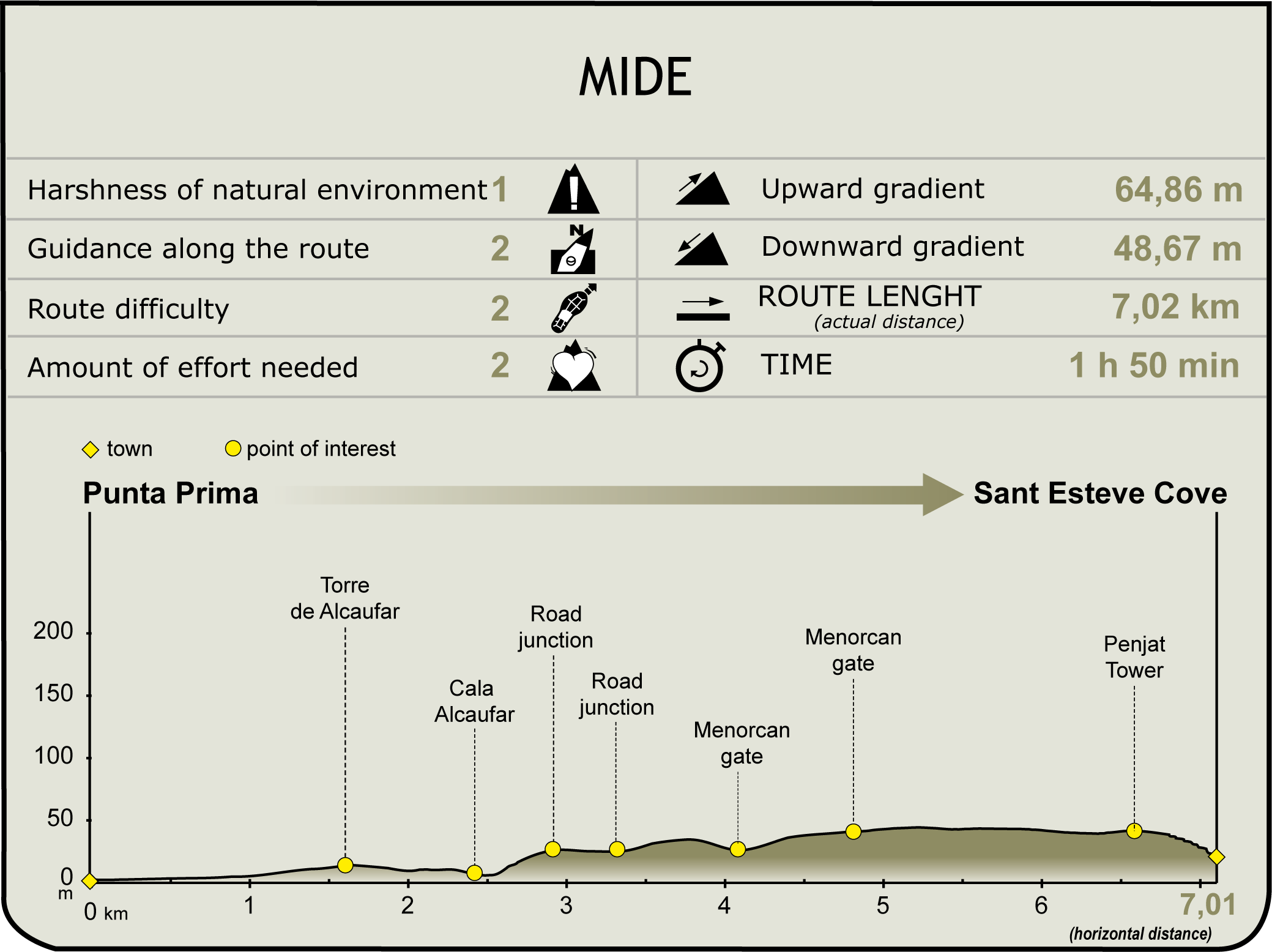
(Calculated according to the MIDE criteria for an average excursionist with a light load)
Highlights
Fort Marlborough
This fort was built during the first British rule of Menorca (1710-1726) and was named after the most prominent British general of the time: John Churchill, the Duke of Marlborough.
The sole purpose of the construction was to defend the coveted port of Maó, which was however seized by French troops in 1756 and by Spanish troops in 1781. Peace would not arrive until 1802, when Britain definitively returned Menorca to Spain through the Treaty of Amiens.
The fort has a series of underground galleries with different rooms and halls, defensive galleries and a moat to protect the central heptagonal enclosure equipped with several cannons to protect the port of Maó from the enemy.
Nowadays, the fort is a museum that can be visited, equipped with the latest technology that realistically takes the traveller back to a truly convulsive period in which the island was the scenario of many wars and conflicts and helps to understand Menorca's past and present.



